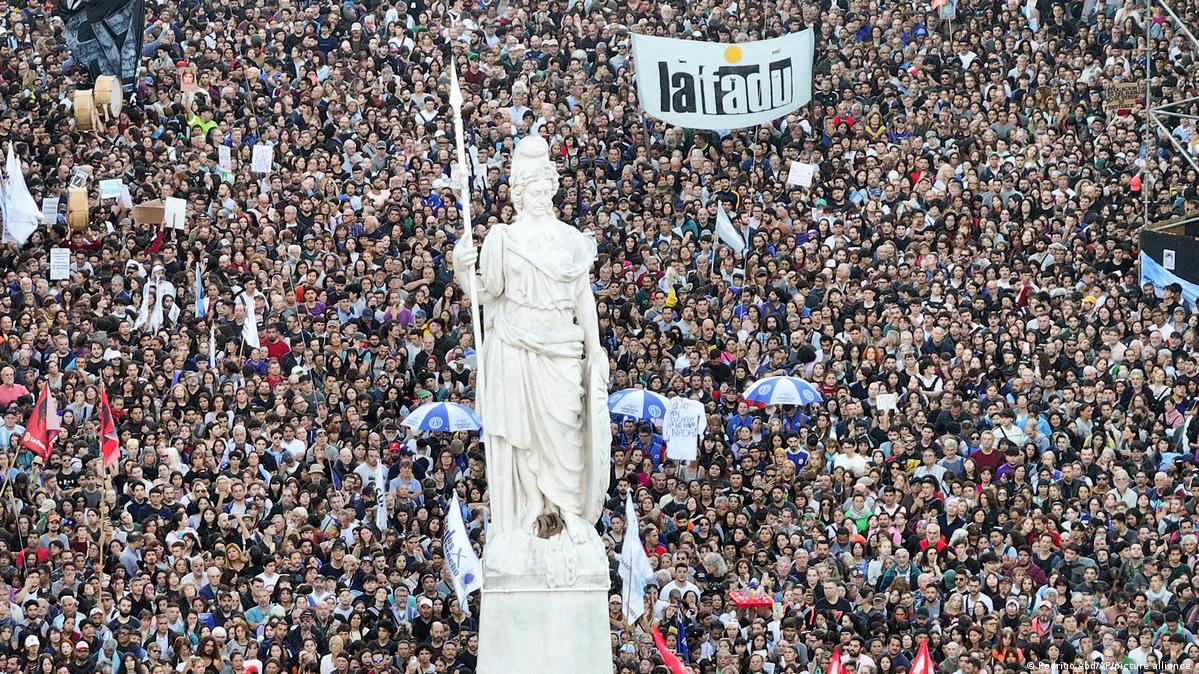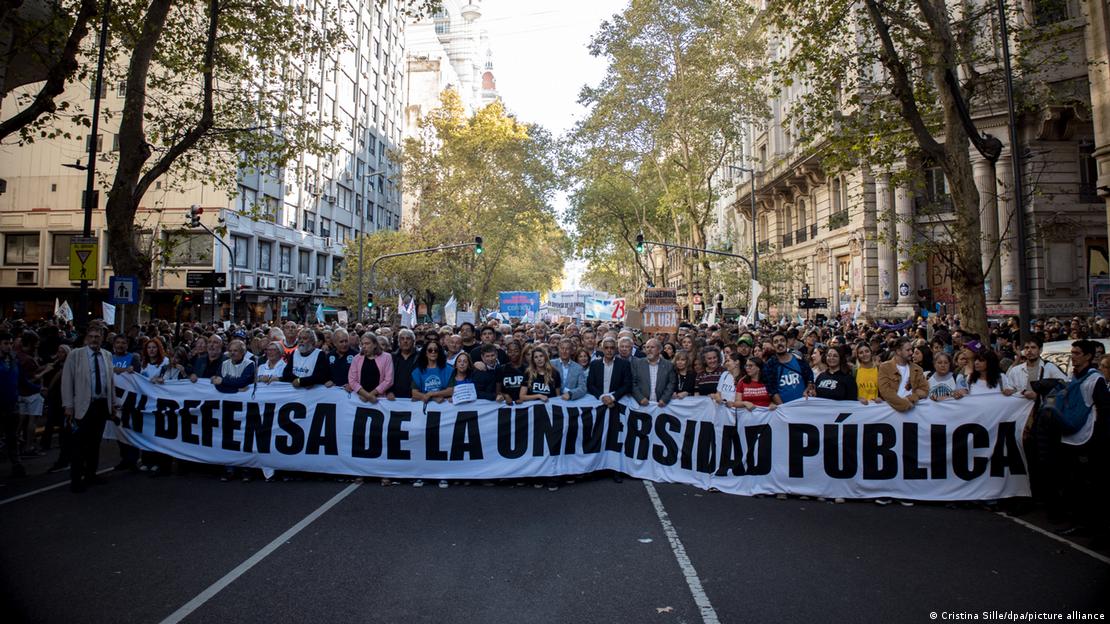
The symbol of his policies is a chainsaw: President Javier Milei wants to slash the Argentine state and its expenditures down to a minimum. This was the campaign promise that carried him to election victory in November 2023, and it's now the basis for how he's running the government.
Following 15 years of deficit-based fiscal policy and three sovereign debt defaults since 2001, the majority of Argentine voters backed the drastic program he proposed. But that support now appears to be crumbling. This past Tuesday, hundreds of thousands of protesters took to the streets throughout the country to protest his radical austerity measures.
Historic mass demonstrations
According to police, the capital city of Buenos Aires alone saw some 100,000 demonstrators turn out; the University of Buenos Aires put the number at more than 500,000.


Gatherings also took place in many other university cities across Argentina, including Tucuman, Cordoba, Corrientes and Ushuaia. People even turned out in front of the Argentine consulate in Barcelona, Spain, to show solidarity with the demonstrators on the other side of the Atlantic. Various media described the protests as the largest in 20 years.
A warning sign for Milei
Javier Milei's government has faced protests ever since he took office in early December. Facundo Cruz, a political scientist at the University of Buenos Aires, describes many of them as "large, important rallies." But they were limited at the same time, he adds: "The impetus came from a specific political sector."
For instance, in January, the nation's largest union, CGT, called for a general strike. The CGT is closely tied to the populist left-wing, Peronist "Union por la Patria" (Union for the Homeland). Currently the largest opposition party, it spent the last 20 years dominating Argentine politics with leading politicians such as Cristina Fernandez de Kirchner.
But this week's demonstrations were different, Cruz says. "Mobilization took place across sectors and, in some parts of the country, even included people who voted for [Milei's] government and who, when polled, say they support its course."
Flash point: Higher education
According to Cruz, people across the entire political spectrum demonstrated on Tuesday because of the specific policy that was targeted: The government's decision to keep the budget for public universities nominally the same in comparison to the previous year. With 280% inflation over the past 12 months, this corresponds in real terms to cuts of roughly 65%.
"For Argentine society, Argentina set itself apart from the rest of Latin America because social mobility was always tied to public education; this was a guarantee of social mobility," explains Mariana Llanos, an Argentine political scientist at the GIGA Institute for Latin American Studies in Hamburg, Germany. "Argentines can learn to live with many cuts but education is a very sensitive subject," she adds. Llanos believes Milei's drastic cuts may actually work against him.
Five months in: How popular is Milei?
Milei's approval ratings back the idea that Argentines are ready to make sacrifices to stabilize the national budget and economy: Some 50% of Argentines still support the government's extreme liberalization reform program, even following massive cuts and layoffs in the public sector.
Nevertheless, the other half of the population almost entirely opposes Milei's government; fewer than 5% of respondents usually say they are undecided — a clear sign of societal division, Cruz says.
Milei's position in the legislature is also historically fragile: His party, "La Libertad Avanza" (Liberty Advances), holds a mere 45 seats (14%) out of the Argentine Congress' 329 seats. The opposition is split, Llanos says, explaining that Milei can negotiate with one half, but not with the other.
Can Milei keep himself in office?
This is one reason why observers have been speculating since Milei took office as to how long he will be able to remain president. However, Cruz currently doesn't see anyone who would be in the position and willing to take on Milei's complicated legacy. The current president inherited runaway inflation and high unemployment from his predecessor.
Cruz also points out that there is currently no consensus among the opposition as to what a political counterproposal would look like. As long as Milei's approval ratings remain as high as they have been until now, Cruz doesn't believe that he will be chased out of office.
Brian Winter, the editor-in-chief of the Americas-focused political magazine Americas Quarterly, comes to a similar conclusion, though he warns that the unconventional politician isn't entirely in the clear: "I think Milei's job security is pretty good but always in question for a non-Peronist president, especially one making severe budget cuts. The protests [on April 23] were a sign that Argentine society is conflicted about what to cut, and whom to support."
For Llanos, the drastic budget cuts in the education sector are a big — and avoidable — political mistake that could mark a turning point: "Milei is a smart person. He might want to correct this mistake in progress."
This article was translated from the German.

